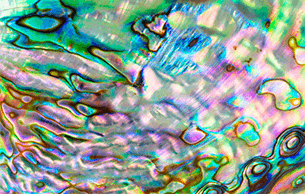Need for rare earth materials in high-end product applications will augment growth opportunities

Frost & Sullivan’s latest analysis, Global Rare Earth Materials Market, Forecast to 2025, reveals that a global uptick in infrastructure development and electronic vehicle demand are key factors driving the $5.40 billion global rare earth materials market growth. Growth is augmented by the rise in neodymium magnet, lanthanum, and cerium-based application requirements in countries such as China, Japan, Korea, the US, Brazil, and Western Europe and a necessity for rare earth materials in metallurgy and battery applications. Frost & Sullivan expects the market to grow at a robust CAGR of 7.0% from 2018 to 2025.
“There has been significant demand for rare earth materials, especially for use in the production of high-end permanent magnets. Demand is strongly characterised by niche requirements—high-purity, specialised rare earth material products with extremely customised application characteristics. End-user electronics, technology and automotive industries prefer such products even though procurement is pricey,” said Ganesh Dabholkar, Senior Analyst, Chemicals & Materials in Infrastructure & Mobility.
Major mining companies are focusing on extensive market research of client needs to offer the most cost-effective products for specific applications and to create tailor-made solutions in order to gain purchase preference and long-term customer loyalty.
“Manufacturing customised products that meet specific application requirements will be key to tapping major business opportunities and competing with the likes of Lynas Corporation, Iluka Resources, and HEFA Rare Earth Canada Co. Ltd.,” noted Dabholkar.
Aspiring participants should aim to tap additional growth opportunities by:
· Forward integration, developing their own processing capabilities and establishing a strong sales and distribution network to leverage their E&P strengths.
· Building long-term pricing contracts with raw material suppliers to effectively manage rare earth material price fluctuations for sustainable profits.
· Leveraging the demand for products, which are of high purity and mandate specific compositions to meet high-end applications, as relatively higher margins exist in high-end product applications, rather than in conventional applications.
“Although there are significant growth prospects, the rare earth materials market is restrained by China’s dominance in terms of reserves, product supply, project investments, and consumption,” noted Dabholkar. “Environmental concerns regarding extraction and use of rare earth materials and a growing trend to research alternative materials, recycle, or find other low-cost rare earth products are factors further hindering market growth.”
Frost & Sullivan’s recent analysis, Global Rare Earth Materials Market, Forecast to 2025, explores the factors and trends that have shaped the global rare earth materials landscape, the challenges that lie ahead, and the opportunities that can be tapped. The research provides a detailed analysis of the growth opportunities for key players in the rare earth materials space.







